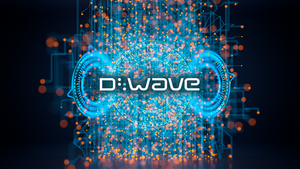
In a monumental leap for scientific research and industrial innovation, the Massachusetts Institute of Technology (MIT), in collaboration with Google DeepMind, has unveiled SCIGEN – a revolutionary generative artificial intelligence (AI) framework poised to fundamentally transform the discovery of breakthrough materials. This sophisticated tool promises to dramatically accelerate the pace at which scientists can design and synthesize novel substances, particularly those with exotic quantum properties, by embedding physical and geometric constraints directly into the AI's creative process.
The immediate implications are profound, suggesting a paradigm shift from traditional, often laborious, trial-and-error methods to a targeted, AI-guided approach. This development is not merely an academic achievement; it signals a new frontier for industries ranging from quantum computing and advanced electronics to renewable energy and pharmaceuticals, where the bottleneck of materials discovery has long hindered progress and innovation.
Unlocking the Universe of Materials: SCIGEN's Breakthrough Methodology
SCIGEN, an acronym for Structural Constraint Integration in GENerative model, addresses a critical challenge in AI-driven materials design: the tendency of models to generate impractical or unstable structures. By integrating explicit physical laws, crystal lattice symmetries, atomic distances, and specific geometric patterns into its generative diffusion models, SCIGEN ensures that every AI-proposed material is not only novel but also physically viable and stable. This meticulous guidance at each iterative generation step significantly reduces the "hallucination" problem prevalent in earlier AI models, saving immense computational resources and and experimental effort.
The tool empowers scientists to direct generative algorithms toward materials exhibiting specialized lattice structures intrinsically linked to desired quantum phenomena, allowing for the precise tailoring of materials for properties like superconductivity, unique magnetic states, or topological insulation. For instance, SCIGEN has already demonstrated its efficacy by generating millions of potential quantum material candidates, leading directly to the successful synthesis and validation of novel compounds, such as two new magnetic materials, TiPdBi and TiPbSb, exhibiting predicted magnetic properties. While a precise public announcement date for the SCIGEN framework's full unveiling is recent, the collaborative nature with Google DeepMind suggests a culmination of cutting-edge AI research and materials science expertise in late 2024 or early 2025, with validation and synthesis efforts continuing into 2025. This places the tool's impact firmly in the current financial landscape. Initial reactions from the scientific community have been overwhelmingly positive, with researchers hailing it as a game-changer for accelerating fundamental discovery. Industry leaders are beginning to assess how such a tool could be integrated into their R&D pipelines, anticipating a significant reduction in time-to-market for new material-dependent products.
The Winners and Losers in a Materials Revolution
The advent of SCIGEN is set to create significant ripples across the financial markets, carving out clear winners and posing challenges for others. Companies at the forefront of materials science and advanced manufacturing stand to gain immensely. Firms like Applied Materials (NASDAQ: AMAT), a leader in semiconductor equipment, and DuPont de Nemours, Inc. (NYSE: DD), with its vast portfolio of specialty materials, could leverage SCIGEN to dramatically shorten their research and development cycles for next-generation products. By enabling the rapid identification and synthesis of novel compounds, these companies could gain a substantial competitive edge in developing materials for advanced electronics, sustainable packaging, and high-performance industrial applications.
Similarly, companies in the burgeoning quantum computing sector, such as IBM (NYSE: IBM) and Google (NASDAQ: GOOGL) (the latter being a collaborator through DeepMind), will find SCIGEN invaluable. The development of stable, high-performance quantum bits (qubits) and other quantum components relies heavily on discovering materials with specific quantum properties. SCIGEN's ability to systematically design and predict such materials could accelerate the commercialization of quantum computers. Pharmaceutical and biotechnology companies, though not directly mentioned, could also benefit indirectly by leveraging similar AI-driven approaches for drug discovery and advanced medical materials.
Conversely, companies heavily reliant on traditional, slow-paced materials R&D processes, or those with less investment in AI integration, might find themselves at a disadvantage. Smaller, less agile materials firms that cannot adapt to AI-accelerated discovery could see their market share erode as competitors bring innovative materials to market faster. Furthermore, the ability to mimic the properties of rare-earth elements using more abundant materials, as suggested by SCIGEN's potential, could impact the market dynamics for companies involved in the extraction and supply of these scarce resources.
A Wider Significance: AI's March into Fundamental Science
SCIGEN's emergence is not an isolated event but a powerful testament to the broader trend of "AI for Science," where artificial intelligence is increasingly becoming an indispensable partner in fundamental research. This development fits perfectly within the accelerating convergence of AI, advanced computing, and experimental science, a trend that promises to unlock solutions to some of humanity's most complex challenges. The tool's ability to overcome the "hallucination" problem in generative AI represents a significant methodological breakthrough, demonstrating how human expertise (in the form of physical constraints) can be effectively integrated with AI's immense processing power to yield practical, actionable results.
The potential ripple effects extend far beyond materials science. This success story could inspire similar constraint-driven generative AI applications in other scientific domains, from drug discovery and protein folding to astrophysics and climate modeling. Competitors in the AI research space, including other major tech firms and academic institutions, will undoubtedly intensify their efforts to develop comparable or even more advanced tools, fostering a new arms race in scientific AI. Regulatory bodies may also begin to consider the implications of AI-designed materials, particularly concerning intellectual property, safety, and the ethical use of powerful generative models in critical scientific fields. Historically, breakthroughs in materials science—from silicon in semiconductors to new alloys in aerospace—have consistently driven industrial revolutions, and SCIGEN appears poised to be another such catalyst, echoing the transformative impact of computational chemistry in the late 20th century.
What Comes Next: A Future Forged by Intelligent Design
In the short term, the scientific community will likely see a surge in experimental validation efforts as researchers worldwide begin to utilize SCIGEN to explore and synthesize the vast number of novel material candidates it can generate. This will lead to an accelerated discovery pipeline, potentially yielding breakthroughs in areas like high-temperature superconductors, novel battery components, and advanced catalysts within the next 12-24 months. For industries, the immediate focus will be on integrating SCIGEN-like capabilities into existing R&D frameworks, requiring significant investment in AI infrastructure, data science talent, and interdisciplinary collaboration between materials scientists and AI engineers.
Longer term, SCIGEN points towards a future where materials design is largely predictive and iterative, significantly reducing the need for costly and time-consuming physical experimentation in the initial stages. This could lead to the development of entirely new classes of materials with unprecedented properties, enabling technologies that are currently unimaginable. Strategic pivots will be essential for companies to remain competitive; those that embrace AI-driven discovery will likely dominate their respective markets. New market opportunities will emerge in AI software and services tailored for materials science, as well as in the rapid prototyping and characterization of AI-designed materials. Potential scenarios include a rapid acceleration in quantum technology development, a revolution in energy storage solutions, and the creation of highly specialized materials for extreme environments.
Wrap-Up: The Dawn of an AI-Driven Materials Age
MIT's SCIGEN tool marks a pivotal moment in the history of materials science and artificial intelligence. By successfully integrating rigorous physical constraints into generative AI, it has effectively solved a long-standing challenge, paving the way for an unprecedented era of accelerated discovery. The key takeaway is clear: AI is no longer just an optimization tool but a powerful engine for fundamental scientific creation.
Moving forward, the market will undoubtedly reward companies that strategically invest in and leverage such advanced AI capabilities. Investors should closely watch firms in the semiconductor, advanced materials, quantum computing, and renewable energy sectors, as these are the industries most likely to experience rapid innovation and competitive shifts due to SCIGEN and similar AI tools. The lasting impact of this development will be a fundamental transformation of how new materials are conceived, designed, and brought to market, ushering in an AI-driven materials age that promises to redefine technological possibilities for decades to come.
This content is intended for informational purposes only and is not financial advice.


















